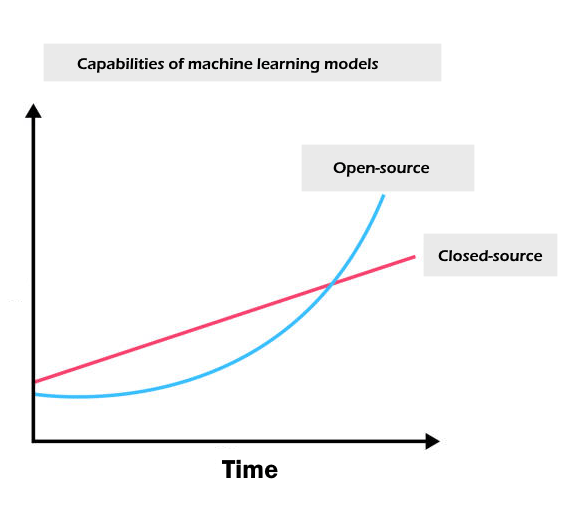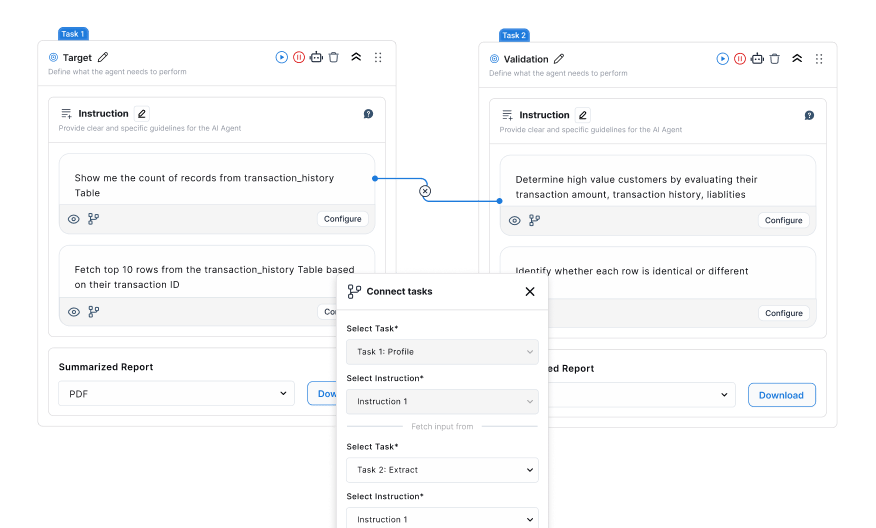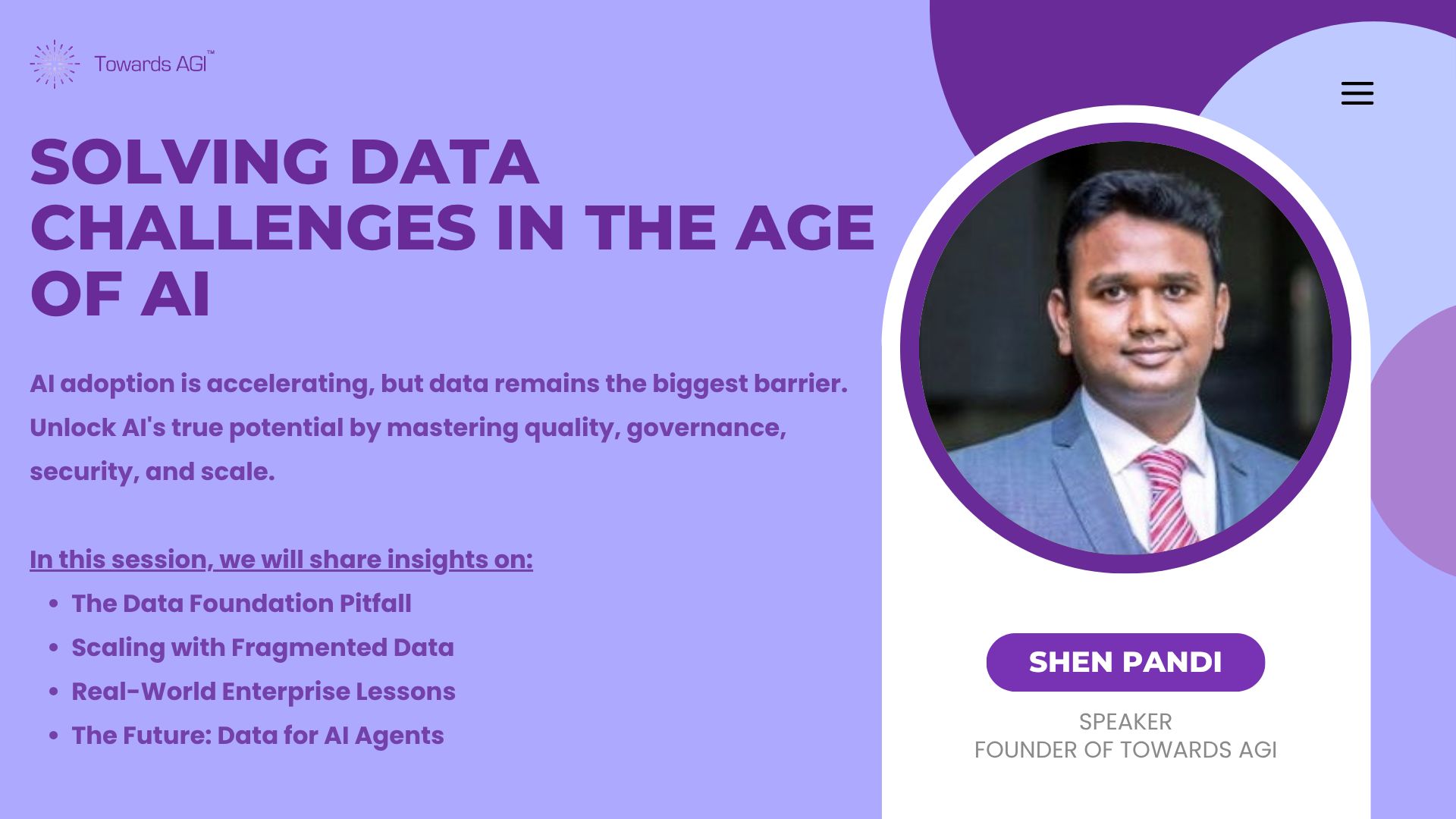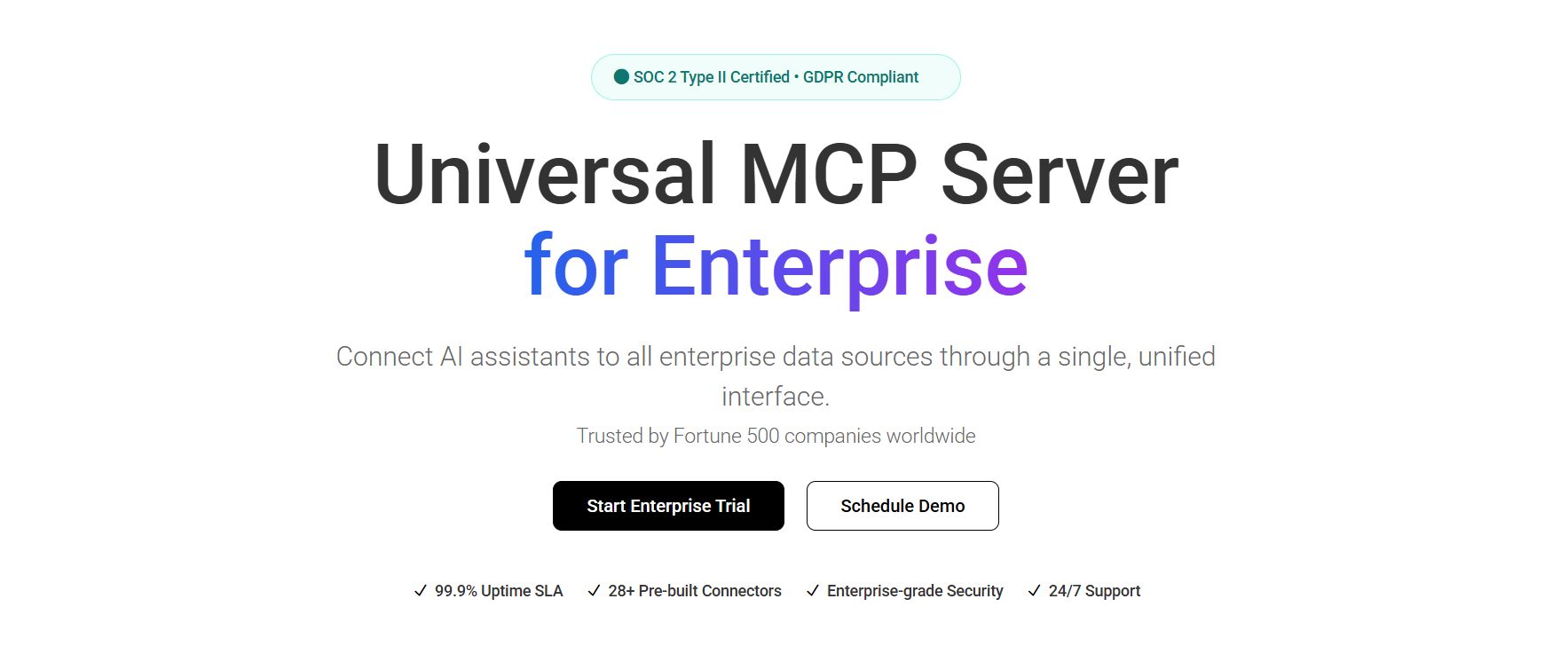- Towards AGI
- Posts
- Can Open Source Survive the Generative AI Revolution?
Can Open Source Survive the Generative AI Revolution?
The Existential Challenge Posed by Generative AI.
Here is what’s new in the AI world.
AI news: Open Source vs. Generative AI
GenAI: The Gen AI Retail Revolution
Hot Tea: The Role of Generative AI in Athlete Safety
OpenAI: Stanford's OpenAI-Powered Medical AI
The Incompatible Economics of Generative AI and Traditional Open Source
You live in a world built on software; your networks, financial systems, and the AI tools you use all rely on a foundation of Free and Open Source Software (FOSS).
This isn't just a convenience; it's the bedrock of modern technology, created through a collaborative ecosystem where developers like you contribute improvements and fixes, creating a virtuous cycle of reciprocity.
The Foundation You Stand On: Provenance and Copyleft
At the heart of this system is provenance: the ability to trace every line of code back to its original creator. This is often enforced by "copyleft" licenses like the GNU GPL, which are designed to keep code free.

Unlike traditional copyright, which restricts use, copyleft requires that if you modify and distribute software, you must share your changes under the same open terms. This ensures the code remains a communal resource.
The AI Problem That Undermines Your Work
Now, generative AI is creating a dangerous situation for your development work. As Sean O'Brien of Yale Privacy Lab explains, when AI models are trained on thousands of FOSS projects, they can spit out code snippets stripped of their origin, license, and context.
For you, this means:
You can't ensure license compliance. If you don't know where AI-generated code came from, you can't provide the required attribution or share your modifications under the same license.
You create legal risk. You become responsible for any licensing infringement in the AI output you use, even if you didn't know it existed.
You break the cycle of reciprocity. You can't contribute improvements back to the original project because you don't know what that project is.
This creates what O'Brien calls "license amnesia." The code loses its history and legal obligations, floating free of the social contract that sustained the open-source ecosystem.
Why This Threatens Your Entire Digital Infrastructure?
The irony is profound. The very infrastructure that powers AI, Linux, Python, and TensorFlow was built on FOSS. Now, corporations are using that foundation to train models that could dismantle the system that made them possible.
Switch to open source and embrace real freedom. 💪✨
— It's FOSS (@itsfoss2)
1:10 PM • Oct 20, 2025
For you, the downstream developer, the consequences are severe:
Critical FOSS projects may wither. If maintainers don't receive contributions and recognition, they can't sustain security patches and improvements.
The digital commons becomes a non-renewable resource. It's being mined by AI but not replenished by the community.
You could inherit a locked-down digital future. The next generation of developers might work in a world where coding is privatized and the internet's foundational code becomes obscured proprietary IP labeled as "public domain" by AI.
Your Responsibility and Your Risk
You are now operating in a legal gray zone. Under emerging legal doctrine:
Only human-created works are copyrightable.
AI outputs are generally considered uncopyrightable.
You are liable for any infringement in the AI-generated code you use.
Training on copyrighted data without permission is legally actionable.
The bottom line is this: FOSS isn't just about free code, it's about the freedom to build together. That freedom, and the critical infrastructure underlying almost all of modern society, is at risk because AI obscures attribution, ownership, and reciprocity.
This is precisely the challenge that DataManagement.AI is built to solve. Our platform provides the essential governance layer that restores visibility and control to your software supply chain.

By automatically tracking the provenance, licensing, and lineage of every code component, whether human-written or AI-generated, DataManagement.AI ensures that the principles of attribution and reciprocity are maintained, protecting your projects from legal risk and helping to preserve the collaborative ecosystem that modern innovation depends on.
What You Need to Ask Yourself
Are you willing to risk using AI-generated code without knowing its legal provenance?
How will you ensure attribution and reciprocity in your projects when using AI tools?
Do you believe AI-generated code should carry the same licensing responsibilities as human-written code?
What can you do to protect the open-source ecosystem that your career and products depend on?
The future of collaborative software development depends on how you and your peers answer these questions today.
Implementing Generative AI to Redefine the Retail Experience
Retail and consumer leaders are increasingly turning to generative AI to drive growth and build customer loyalty in a rapidly evolving market.
By implementing the right applications, companies can create more personalized, efficient, and engaging customer experiences that directly boost revenue.
High-Impact Use Cases Delivering Real ROI
The most valuable generative AI applications in retail currently focus on several key areas:
Accelerated Content & Supply Chain Operations: Brands are using AI to dramatically speed up campaign creation and reduce costs associated with production, media planning, and creative consulting.
Intelligent Customer Engagement: By analyzing customer data, product lines, and market trends, AI can power "next-best-action" recommendations, enabling sales teams to offer hyper-relevant products.
Conversational Business Intelligence: Natural language processing transforms complex sales data into plain-English insights, helping leaders refine product assortments and optimize channel strategies.
Precision Demand Forecasting: AI models that focus on individual consumer behaviors and local market conditions lead to more accurate inventory management and targeted marketing.
Luxury isn’t just made, it’s crafted with intention.
This Product campaign for "VANGELYN" brand was brought to life through AI.
Every shade, every shimmer, was designed by imagination and artificial intelligence.Brands looking for product modelling with AI, send us a DM now!❤️
— Brand Growth |Ai content | Writer (@Brandgrowthai)
10:34 AM • Oct 28, 2025
A Practical Framework for Implementation
Success with generative AI requires a strategic approach:
Start with Focused Pilots: Begin by enhancing manageable parts of business processes to build confidence and upskill your team.
Prioritize Data Quality: While perfect data isn't required to start, invest in cleaning duplicates, correcting errors, and validating sources.
Build Scalable Infrastructure: Ensure your technology can handle growing data volumes from online sales, in-store transactions, and supply chain logistics.
Create Cross-Functional Alignment: Coordinate AI initiatives across the organization to maximize impact and prevent legal, regulatory, and bias issues.
Tie Projects to Business Goals: Connect AI investments to specific objectives like customer experience improvement or inventory optimization, and regularly review their alignment with shifting market trends.
The future of retail AI lies in agentic systems that combine multiple AI agents for autonomous decision-making. This could include smart shopping assistants and AI-driven software that makes purchase decisions. To prepare, leaders should:
Educate teams on the distinct capabilities of agentic versus generative AI
Proactively establish policies for data governance, bias mitigation, and transparency
Launching a new store entirely with AI.
First hour got the first sale.
No idea if it will scale.
Tutorials coming soon.
— Davie Fogarty (@daviefogarty)
3:35 AM • Oct 23, 2025
Generative AI represents a powerful tool for retail brands to streamline operations, gain deeper insights, and meet ever-changing customer expectations. Those who implement it strategically will be best positioned to capture its full potential.
This is exactly what we'll be diving into with Shen Pandi, Founder of Towards AGI, in an essential session: "Solving Data Challenges in the Age of AI” on October 29.

Only a few spots left. Hurry up! Only one day to go.
Generative AI Shows Promise in Preventing Athletic Injuries, Study Finds
Researchers at the University of California, San Diego, have developed a groundbreaking generative AI model designed to help athletes prevent injuries, improve training, and aid in rehabilitation.
The model, named BIGE (Biomechanics-informed GenAI for Exercise Science), represents a significant advancement by merging artificial intelligence with the real-world physical limits of the human body.
Unlike typical generative AI models that create human movements that are often anatomically impossible or strained, BIGE was trained on athlete motion-capture data alongside critical biomechanical constraints, such as the maximum force a muscle can exert.
Convolutional neural networks rule out proximal humerus fractures on radiographs, but despite rigorous training methodology based on CT imaging with multi-rater consensus as the reference standard, AI-driven classification is insufficient.
ow.ly/eTMP50Umoln
— Mo Imam (@MoAImam)
9:05 PM • Oct 27, 2025
This unique approach allows it to generate realistic and safe video demonstrations of exercises for athletes to follow.
The model has two primary applications:
Injury Prevention & Performance: It can generate the optimal motions for an athlete to execute during training to avoid injury and enhance performance.
Rehabilitation: It can create safe, effective motions that injured athletes can perform to maintain their fitness during recovery.
According to the research team, BIGE is the first model of its kind to successfully integrate generative AI with realistic biomechanics.
While other AI movement generators ignore anatomical limits, and traditional biomechanical simulations require massive computational power, BIGE offers a practical and physically accurate solution.
Trained initially on motion-capture data of squats, the researchers translated the movements into 3D skeletal models and used the computed forces to generate new, realistic motions.
Future work will expand the model to include other movements beyond squats and personalize it for individual athletes.
The potential applications extend beyond sports. The researchers suggest the model could be used to assess fall risks in the elderly.
This innovation, recently presented at a leading conference, points toward a future where AI can provide personalized, physically intelligent guidance for human movement.
This is precisely the frontier of AI research we explore at TowardsMCP. We dive deep into the models, tools, and frameworks like the Model Context Protocol (MCP) that are powering these next-generation AI applications.

If you're fascinated by how AI is learning to understand and interact with the physical world, join our community to stay ahead of the curve.
Teaching AI Clinical Reasoning with OpenAI
Stanford University has developed a new AI-powered platform called Clinical Mind AI to enhance clinical reasoning skills among medical students.
The platform, built using OpenAI's API, treats clinical reasoning as a practical skill that can be honed through realistic simulation and immediate feedback.
Bridging the Gap Between Students and Experts
The project was launched by Dr. Marcos Rojas Pino, who sought to identify what separates novice students from expert clinicians.
He determined the key difference lies in two core skills: asking the right questions to gather patient data and accurately judging which findings are clinically significant.
If I can push students to interrogate a patient and judge the answers, they should improve those skills.
A Scalable, Realistic Training Simulation
Clinical Mind AI allows instructors to create diverse patient cases. Students can then interview these simulated patients via text or real-time voice in an interface designed to resemble a modern telehealth system.
The platform includes features like an electronic health record for note-taking, the ability to review images, and options to order tests. The system can even generate a patient photo and other materials based on the instructor's script.
This approach makes high-quality, simulation-based education, traditionally limited to well-resourced institutions, accessible at a much larger scale.
Professors can tailor cases to local languages, regional diseases, and their school's specific clinical framework.
Global Adoption and Measurable Impact
The platform is already seeing significant adoption:
It is currently used at 15 universities across the U.S., Central America, South America, and Australia.
More than 20 additional institutions in Asia, Africa, and Europe are on a waitlist.
Over 1,250 medical students are actively using the system.
Its use has expanded beyond medicine to fields like nursing, dentistry, and physical therapy.
Faculty use the platform to access student transcripts, track progress, and provide personalized feedback.
Early data suggest that this real-time simulation helps educators identify critical skill gaps that traditional assessments often miss, ultimately strengthening students' abilities in data collection, pattern recognition, and clinical decision-making.
Journey Towards AGI
Research and advisory firm guiding industry and their partners to meaningful, high-ROI change on the journey to Artificial General Intelligence.
Know Your Inference Maximising GenAI impact on performance and Efficiency. | Model Context Protocol Connect AI assistants to all enterprise data sources through a single interface. |
Your opinion matters!
Hope you loved reading our piece of newsletter as much as we had fun writing it.
Share your experience and feedback with us below ‘cause we take your critique very critically.
How's your experience? |
Thank you for reading
-Shen & Towards AGI team